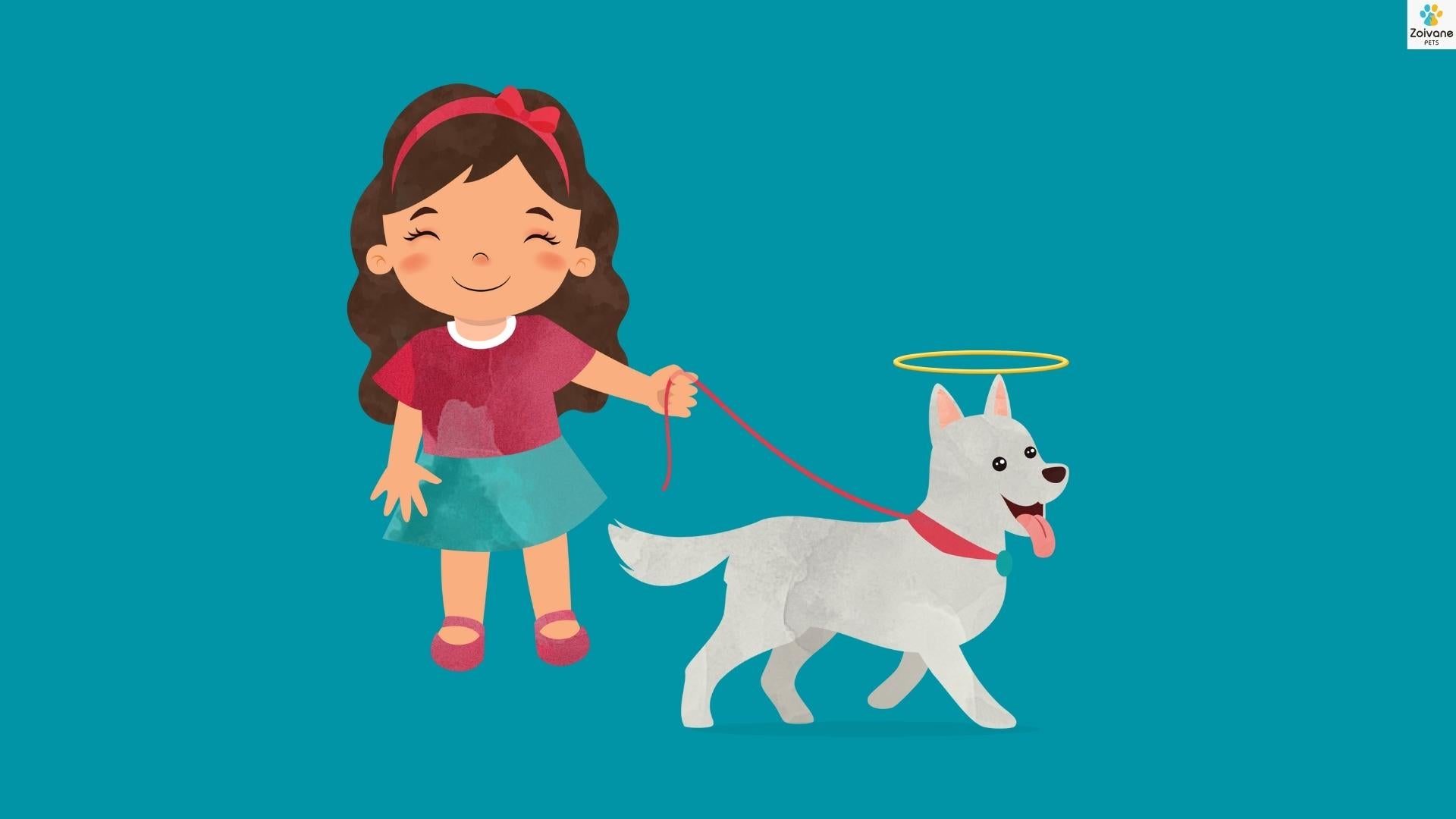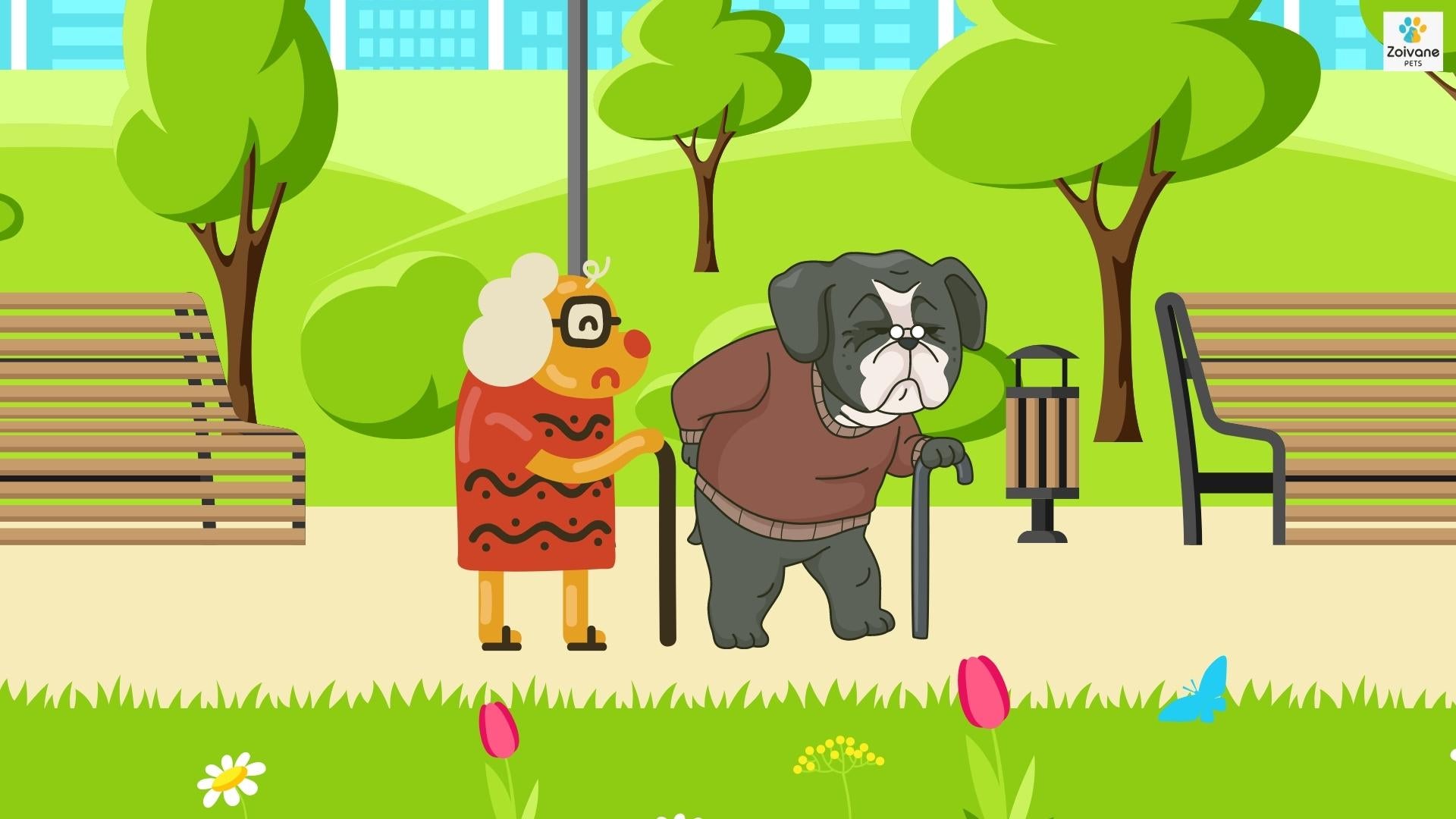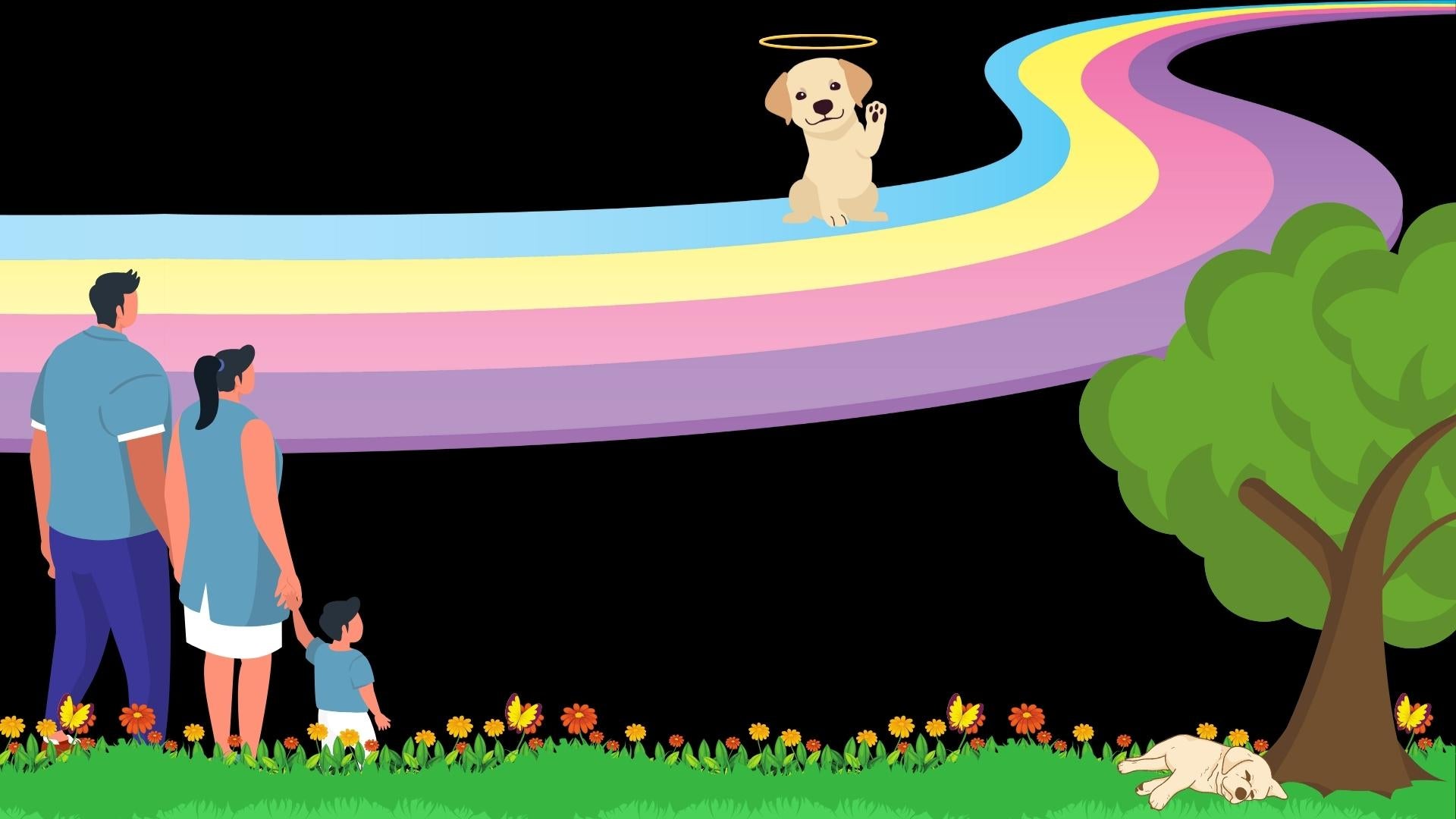
How to Help Children Cope with a Pet's Death
“A child’s heart is as pure as an angel & as fresh as a blooming flower”
This beautiful quote is a precise rendition of a child’s essence. There are uncountable fables & stories of a child’s innocence, affection, love, selflessness & care. Which is why losing a pet can be more devastating for children than mature adults who have better self-control, experience & more ways to distract themselves from processing anguish & loss.
This blog is an extension of our blog on how to cope with the loss of a pet. Read it here.
This blog takes you on a voyage of understanding a child’s psyche, how children process real-life hard-hitters like loss, death & grief; Additionally, how you, as Pet Parents & parents to your children, should help your child cope with the loss of a pet & process complex emotions.

The loss of a pet might very well be your child’s first brush with death & feelings of sadness & loss; however, this is also your first opportunity to teach them about grief & pain that inevitably accompanies the joy of loving another living creature. Losing a pet can be a traumatic experience for a child. Children are super attached to their pets, some of them have may never have seen their house without their pet.
Unable to process death & loss, a child can act out & blame themselves or you for the pet’s death. The child may also feel that other people or animals he’s close to may also leave him. This phase is very important in your child’s life as such an experience can have a lasting positive or a negative impact on your child’s mental & emotional development.
Experts believe that trying to make youngsters understand the truth is a far better approach than trying to shield them from the truth by lying or misleading them about the truth. Pretending that the pet ran away or went to sleep can confuse the child. This can confuse or negatively impact the child & make him feel confused, frightened & betrayed when he eventually learns the truth.

Developmental Stages & Grief
How children process & overcome their grief depends largely on their age & developmental stage. As an adult, you’ll have to frame the conversation surrounding your pet’s demise accordingly. Let’s take a look: -
Infants (0-2 years)
Infants & young children can’t emote as well or talk, but they’re quick to sense emotions. When babies sense sadness or grief, they tend to have behavioural changes like increased irritability & crying. Young children may want to be held more in order to seek safety & security.
Young children (2-6 years)
This age group is still immature & unable to comprehend the permanence of death & the emotions it brings. Children this age are curious & will tend to ask questions. While trying to process their grief they may enact scenes from your pet’s passing during playtime. This is absolutely normal. As parents, make sure to answer their questions as sensitively as possible. Accessorising your explanation with an age-appropriate book or pictures would help.
School going children (7-10 years)
By this age, children start understanding the concepts around death. Additionally, they may have a lot of questions. They may exhibit anomalous behaviour such staying quiet or lashing out in anger. Give them space & time. Validate their feelings so that they understand healthy emotional responses.
Preteens & Teens
This age group understands the various nuances of death & may have had other experiences with a family member. However, for teens, their pet may have been the one “constant” who understood them, who loved them unconditionally and around whom they could be themselves.
Children this age may repress their feelings. They may try to mask sadness & grief with anger & irritability. Encourage them to speak to someone, if not you then a close friend. Teens tend to emote by journaling, drawing or writing their feelings, support it. Teens may not always open up about their own feelings but they’re always observant. Don’t be hesitant to communicate your own feelings.

How to overcome grief: A step-by-step guide
Let’s take a look at some steps you can take to help your child through his journey of coping with grief, loss & pain of losing a pet: -
Prepare them: If your pet is about to pass or after, sit & speak with your child as soon as possible. Choose a familiar, peaceful & comfortable place & time to talk. Reassure your kids that they can still enjoy the time they have left with their pet. Prepare them for a natural passing – old age, impending ailments or injuries. In case of an unnatural passing like an accident, introduce the topic as patiently & calmly as possible.
Choose words that are direct, calm & honest: According to psychologists, using words like “death” & “passing away” are much better than “went away”, “went to sleep”, “ran away” or “went to heaven”. It’s important to make the child understand the gravity & permanence of death; that the pet will never come back. Misleading words or lies can cause confusion & anxiety and can lead to mistrust & misunderstandings in the future.
Address their questions: Experts encourage addressing children’s questions as this indicates that the child wants to further understand & talk about what has happened. This also provides you with an opportunity to comfort the child & explain your pet’s passing better.
Don’t Lie: For the time being, it may seem like a good idea to lie or mislead the child. Refrain from doing this. Blaming a doctor or Vet may scare children away from further seeking help for another sick pet or person in the family. Similarly, misleading your kid by saying that the pet ran away or went away will leave the child subconsciously searching for the pet, wondering why the pet did not love them enough for him to stay.
Reassure your child that they weren’t responsible for your pet’s death. Learning about a pet’s passing, especially for the first time, can raise a lot of questions, doubts & fears in a child. It’s imperative to reassure your child that pets & people he’s close to will not abandon or hurt him intentionally.
Remind children that it’s okay to cry: Regardless of their age or gender, it’s important that children, firstly, feel comfortable emoting with you. Secondly, remind them that expressing their feelings & missing their pet are good and completely normal feelings. In today’s times, especially, empowering today's children, teens & their parents to validate their feelings is important. Also, children should be explained that everyone expresses & processes grief in different ways (crying, numbness, apathy, staying busy, etc.), all of which are normal.
Remind them that you’re hurting too: In addition to supporting & helping your child in this phase, it’s important to let them see your feelings so that they know that they’re not alone in feeling such heavy & complex emotions. Talking about what the pet meant to you and how much you miss it, as well as special things the family can do to remember it helps your child understand grief better.
Use a book or pictures to explain death: Supplementing your explanation with a book, images, presentations or easy videos on the web can greatly enhance the child’s learning of the phenomenon.
Engage in a goodbye ritual: This exercise can prove vital to the psyche of your child as it’ll provide them with some much-needed closure. Child Psychologists believe that making a scrapbook, holding a memorial service, or scattering a pet’s ashes can bring honour, closure & finality to saying goodbye. Children, who are already learning creative ways to express themselves should be encouraged to write, draw or express their feelings however they feel like.
Every child is unique: Remember that every child is special, different & their own person. Their ability & process of coping with a pet’s death depends on multiple variables, such as upbringing, age, developmental level, how close they were with the pet & how easily they communicate with their family members.
Involve your child in talks with the Vet: Apart from being completely transparent, if possible, take your kid along to the vet so that they too understand what your pet is going through & how euthanasia should be considered as an option to not prolong your pet’s anguish
Explain the role of Euthanasia: Older children who are slightly mature should be explained the various nuances of Euthanasia; that the vet will ‘give our pet a shot to put them to sleep and stop their heart from beating’. Before euthanasia, make sure they understand that their “pet wasn’t going to get better & that the family, collectively, chose a kinder way to help the pet die without pain”.
Lastly & most importantly, don’t rush to get a replacement pet: DO NOT rush to replace the absence of your pet with a replacement pet till you, your family & your children have had a chance to process their feelings & grieve their pet. Taking this step prematurely may subconsciously send a message to your child that grief & sadness can be overcome by getting a replacement.

“Any time we normalize death as a part of life, the better our children will be able to cope with other losses, not just death. By validating their feelings of anger, hopelessness and powerlessness, we help them learn emotional regulation for other losses. They learn that an experience hurts, but they will survive.”
Do you have a story to share too? Connect with Zoivane Pets on our Website, Instagram, Linkedin, Facebook & YouTube. For suggestions and writeups mail us at wecare.zoivane@gmail.com or Whatsapp us on +91-9727054006.
















Leave a comment
This site is protected by hCaptcha and the hCaptcha Privacy Policy and Terms of Service apply.